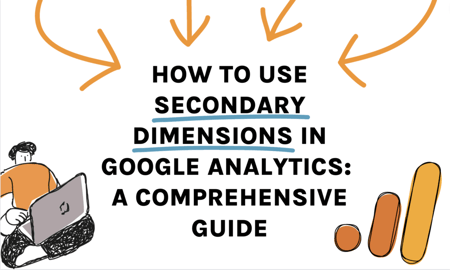Enhance Your Data Analysis Using Secondary Dimensions
The true depth of understandings exists in the combination of second dimensions. The calculated use of secondary dimensions boosts analysis beyond the surface area degree, promising a riches of untapped possible waiting to be found.
Recognizing Second Dimensions
Secondary measurements in information evaluation describe additional characteristics or metrics that give much deeper insights when integrated with main information measurements, enhancing the total understanding of the dataset. These added measurements offer an even more detailed view of the information, enabling experts to reveal hidden patterns, connections, and fads that might not appear when only taking into consideration primary dimensions.
By including additional dimensions right into information analysis, experts can gain a much more nuanced understanding of the elements influencing the main metrics. As an example, in marketing evaluation, main measurements might consist of standard client demographics like age and sex, while additional measurements can include variables such as purchasing habits, preferences, or geographic location. By incorporating these main and additional measurements, analysts can develop a lot more comprehensive customer accounts, enabling even more targeted and reliable advertising and marketing methods.
In addition, secondary measurements can help in identifying connections between different variables, bring about more exact anticipating modeling and decision-making. They allow analysts to check out information from several viewpoints, enriching the insights drawn from the dataset and ultimately boosting the quality of analysis and tactical suggestions.
Advantages of Additional Measurements
When taking into consideration information evaluation, incorporating second dimensions provides a wide range of benefits that considerably improve the deepness and breadth of insights acquired from primary data measurements. By adding additional dimensions such as time, location, or demographic details to the analysis, scientists can get a more comprehensive understanding of the key information factors.
Additionally, additional measurements can also aid in segmenting information, enabling for a more detailed evaluation of details parts within the primary data. This division can result in more targeted strategies and actions based on the unique features of each segment. Furthermore, second dimensions can assist in validating searchings for from primary data dimensions, giving a much more reputable and robust basis for decision-making.
Essentially, the benefits of integrating second measurements right into data analysis are indispensable, supplying richer understandings and allowing more educated decision-making processes.
Carrying Out Additional Dimensions Properly
When including additional dimensions, it is critical to align them with the main dimensions to get deeper insights into the data. It is essential to pick secondary measurements that enhance the key data without triggering sound or confusion in the evaluation.
Additionally, take into consideration the scalability of the additional measurements throughout different datasets or evaluations. By implementing second dimensions efficiently, experts can enhance the depth and precision of their information analysis, leading to more educated decision-making and actionable insights.
Advanced Techniques With Second Measurements
For an extra advanced technique to data analysis, including second measurements can significantly raise the deepness of insights acquired. Advanced methods with second dimensions entail even more elaborate techniques to remove valuable info from information sets. One such strategy is associate analysis, where data is segmented based on details characteristics or actions to track patterns with time. This technique enables for a much deeper understanding of just how various teams communicate and develop with your item or solution.
One more sophisticated strategy is regression analysis, which helps determine relationships between variables and just how they affect each various other. By adding additional measurements, such as group details or user actions, to regression versions, you can reveal much more nuanced understandings and make even more exact forecasts.

Situation Studies: Secondary Dimensions at work

In an additional circumstance, a doctor leveraged additional measurements to maximize source appropriation. By assessing individual results in connection with geographical place, the company recognized areas with high readmission prices. This resulted in the execution of targeted treatment programs in those areas, ultimately improving patient treatment and reducing healthcare costs.
These case research studies illustrate the power of second dimensions in revealing important insights that drive critical decision-making. By diving deeper into information evaluation past primary metrics, organizations can acquire a more thorough understanding of their procedures and consumers, causing more effective and educated business strategies.
Final Thought
To conclude, the consolidation of second measurements in information analysis is crucial for obtaining a thorough understanding of underlying factors and trends. By using strategies such as friend evaluation and regression evaluation, organizations can reveal concealed insights and make more enlightened decisions. Secondary measurements include Resources depth and breadth to data analysis, permitting businesses to check out information from multiple perspectives weblink and drive much more efficient results.
In marketing evaluation, main measurements can include fundamental customer demographics like age and sex, while second measurements can include variables such as buying behavior, preferences, or geographical location.When taking into consideration information analysis, integrating secondary measurements supplies a wide range of advantages that considerably improve the deepness and breadth of understandings derived from primary information dimensions.Furthermore, second measurements can likewise assist in segmenting data, enabling for a more detailed evaluation of particular parts within the main data. Furthermore, second measurements can help in validating findings from key information measurements, giving a more robust and reliable basis for decision-making.
When incorporating second measurements, it is crucial to straighten them with the primary dimensions to gain much deeper insights right into the data.
Comments on “Unlocking SEO Success with Advanced Analytics and Secondary Dimensions”